Guide to Jewelry Making Hammers
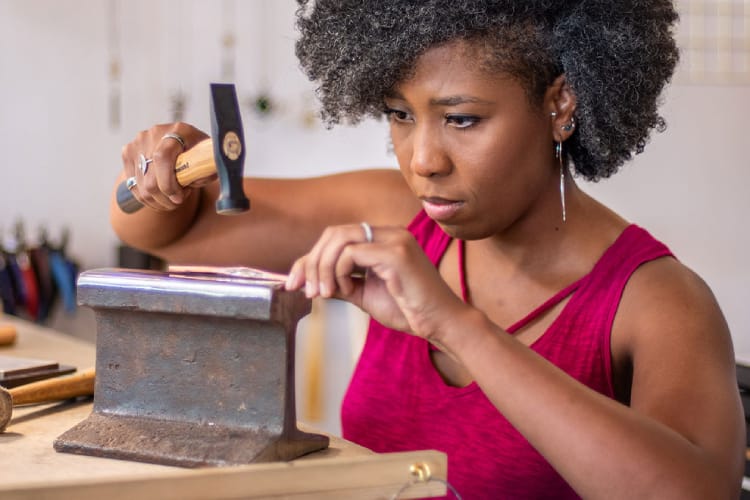
Glossary of Hammers Used in Jewelry Making
Jewelry making hammers are a jeweler’s best friends. People become very attached to their favorite hammers for good reasons! The hammer is an extension of your arm. Different types of hammers can flatten, shape, stretch, thin or dome your metal; they can control the edges of your piece with a soft or hard edge; and you can also texture your piece, just to name a few. There are a lot of jewelry hammers out there, so to straighten-up the confusion, we’ll break it down in this glossary for you.
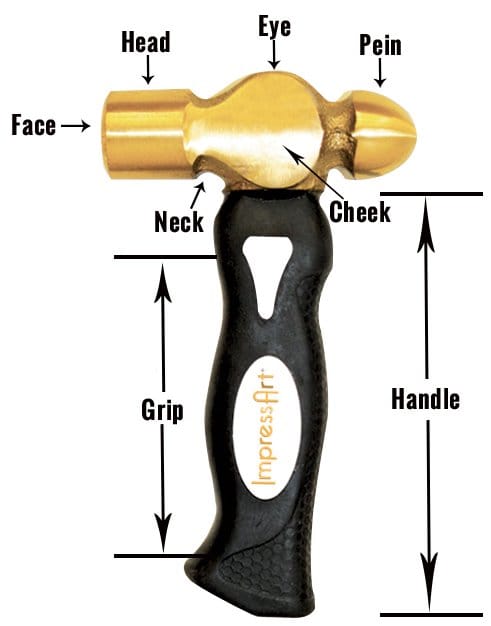
Brass Stamping Hammer
First of all: Know your hammer! This photo is courtesy of Impress Art and shows the name of each part of the hammer. This is a brass hammer, which is also called a dead blow hammer. It’s great for metal stamping because the brass absorbs the impact of the strike. This is important so your stamp doesn’t skip around on whatever you’re stamping.
6 Types of Hammers:
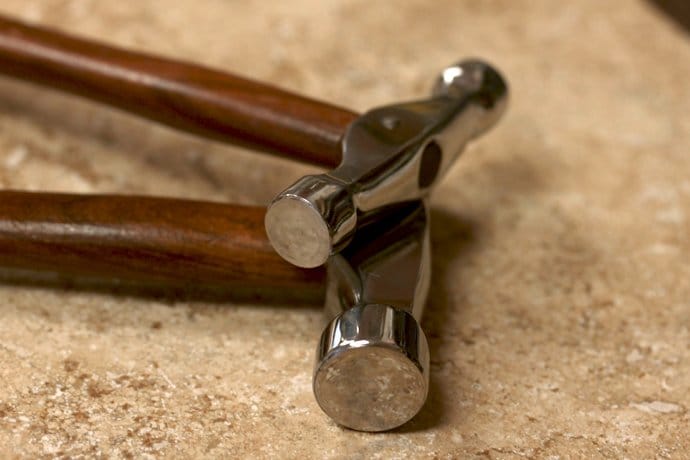
Planishing Hammers
1. Planishing:
This is probably the most important hammer type of all. Using overlapping hammer strikes, this hammer smooths your metal. It comes with two faces: the flat face smooths the metal while the round face will shape it.
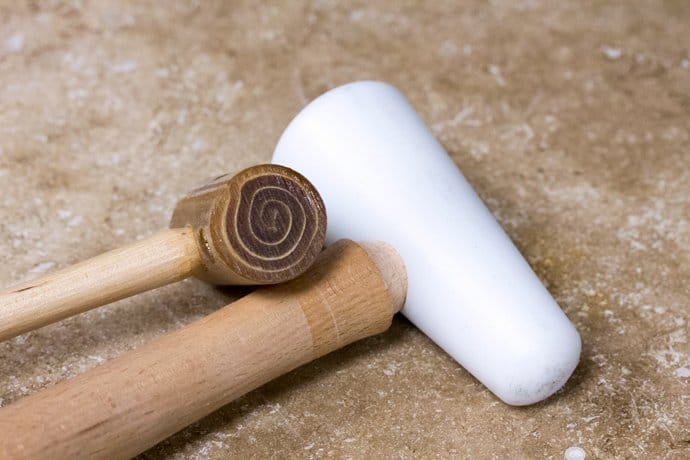
Rawhide & Nylon Hammers
2. Rawhide and Nylon:
Owning one of these is a must! These are the hammers to have on hand when you don’t want to leave a mark on your piece but you still need to smooth or move your metal.
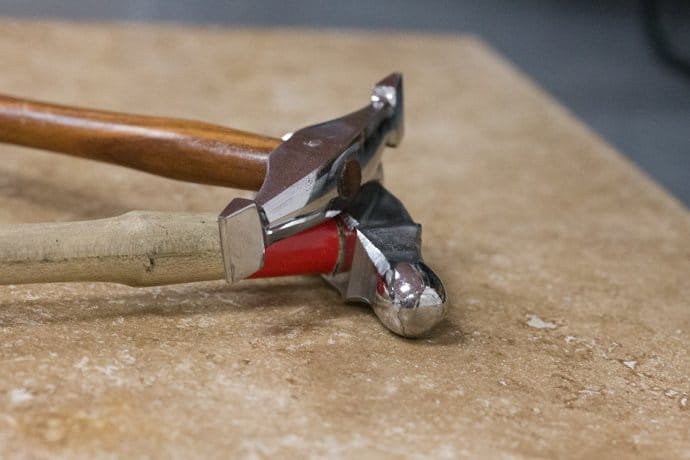
Raising Hammers – Cross & Ball Pein
3. Raising:
There are two types of raising hammers: cross and ball pein. These hammers really move the metal sheet!
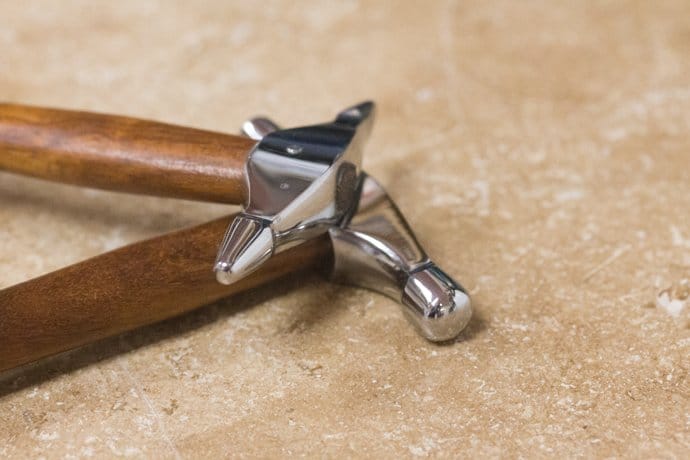
Embossing Jewelry Hammers
4. Embossing:
Use this type of hammer to shape the piece, hammering from the inside (fluting) or the front of your piece (embossing) which creates a relief.
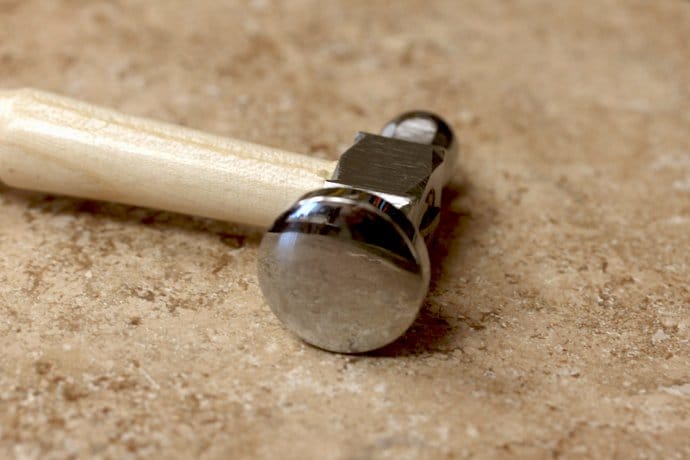
Domed Chasing Hammer
5. Chasing:
Used to hit the top of a chasing tool. When you use a chasing tool to create carvings or designs in your metal, you want to be able to focus on your metal piece and the tool tip, rather than worry about your hammer striking the tools. That is why the faces on these hammers are large.
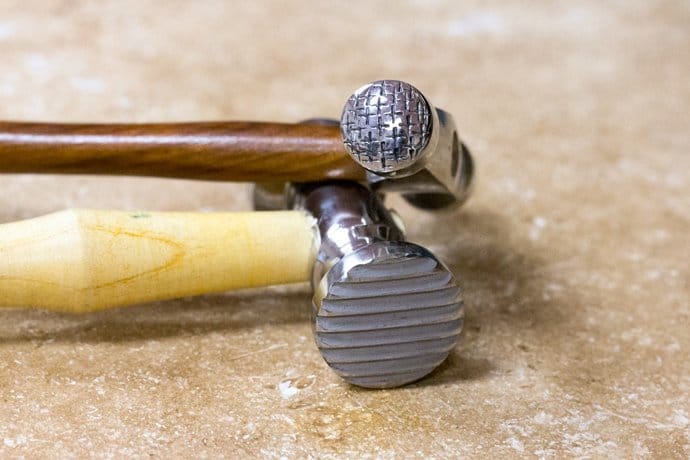
Texturing Jewelry Making Hammers
6. Texturing:
These types of hammers are a ton of fun! Texturing hammers can be used to make repetitive patterns on metal. You can even make your own texturing hammer by carving designs into the face of a chasing hammer.
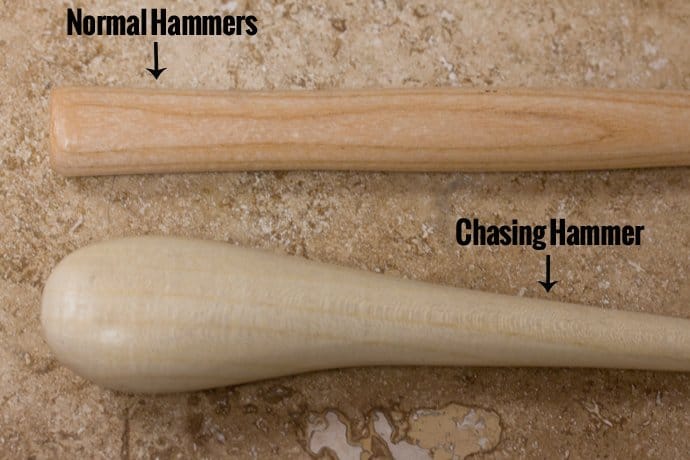
Hammer Handle Comparison
Hammering Tips
When hammering, keep your arm straight by your side, move the elbow up and down, use your entire arm and stand if possible for more powerful blows. If you can move your metal rather than the hammer, your strikes will be more controlled.
The exception to this is the chasing hammer. Chasing hammers are used quickly with the strikes landing lightly. Be sure to use your wrist and not your arm, that’s why the handle is curved for an easier grip.
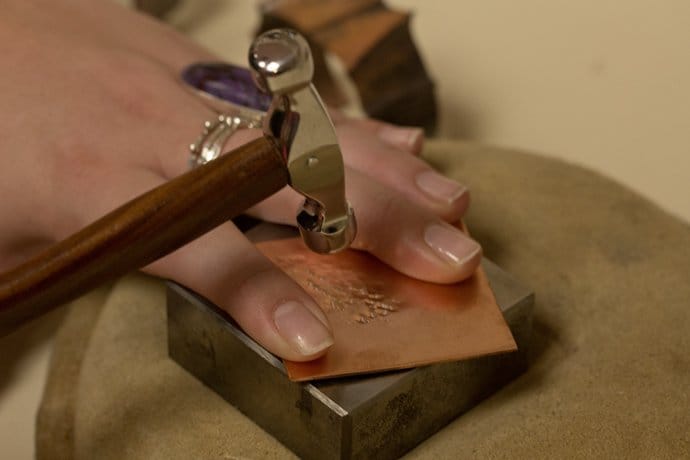
Texturing Control Tip
Last but not least:
Practice! It’s important to have control with your hammers. Since weight, grip, and size can alter between hammers I occasionally like to practice, especially after purchasing a new one.
Source: Halstead